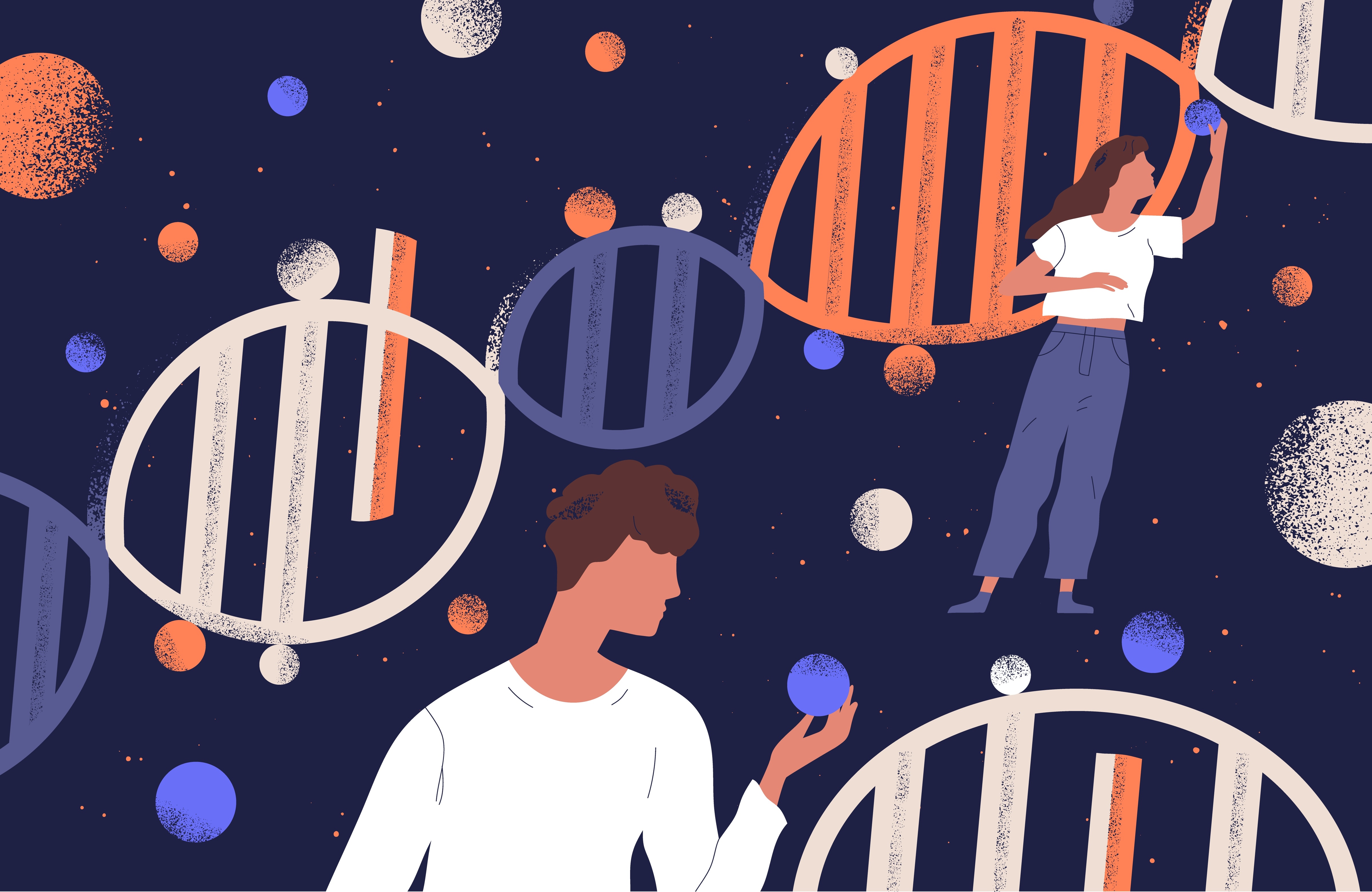
Imagine (or remember) that fateful day... An email in your inbox that says "your results are ready!"
You login to your account to check out your results...
There's a lot less Italian than you expected... And way more Chinese.
You know all the last names from the last few generations of your family. You remember all of Nonna's stories.
How can someone from a family of Pannonis and Cubiottis and Sopranos end up with just 23% Italian ancestry and 8% Chinese when you're positive no one in your family has ever been to China?
By the end of this blog post, you'll understand exactly what happened.
Two Types of Ancestry: Genetic vs. Cultural -- They Are Not The Same
First, it's important to understand the difference between genetic ancestry and cultural ancestry.
While they often intertwine, genetic and cultural ancestries represent distinct aspects of your heritage and identity.
Your last name would be a part of your cultural ancestry. Customs, traditions, languages, and historical events are also related to your cultural ancestry. Religious beliefs, cuisines, and Nonna's stories all come from the cultural side of your ancestry.
Every bit of your cultural ancestry is as valid as you've always felt it to be, no matter what your genetic ancestry is.
Genetic ancestry, as the name implies, is a story written in your DNA.
DNA is a molecule -- or a large collection of molecules. It doesn't care about cuisines, religions, languages, music, Nonna's stories, country borders, or what your last name is.
Your DNA contains thousands of markers that are unique to certain populations around the globe. When scientists examine your DNA, they're looking for these genetic markers.
For example, if you have many markers that are common among people of Scandinavian descent, it's a good indication that you have Scandinavian ancestors. These markers can reveal insights about where your ancestors lived hundreds or even thousands of years ago, providing a glimpse of your genetic ancestry.
You might identify as Italian because you grew up in an Italian neighborhood, surrounded by Italian last names and plates of parmigiana di melanzane. However, that doesn't mean you don't have ancestors from other parts of the world, including China.
Humans have moved around the world a whole lot over the millennia. It's not unreasonable to think one of your ancestors in Italy had Chinese roots, especially if you know world history. European countries have been consistent trade partners with far east Asian nations for at least 500 years. There were also many military conflicts that could bring two populations together, the conquests of Genghis Khan being a notable example.
In a nutshell, while your genetic and cultural ancestry may have a few differences, they are both equally valid aspects of your identity and family history. It's the coming-together of these distinct stories that makes your individual ancestry unique and fascinating.
The Genetic Lottery: What DNA You Inherited Is Random
The inheritance of DNA is an intricate dance, with genes swapping and shuffling as they get passed down from generation to generation. As I mentioned in a similar blog post, it's like a game of poker.
Your parents each had a deck of cards. You were dealt half a deck from each parent to create your own full deck, but the individual cards you received from each half is completely random.
You may have two aces of spades, only a couple kings, and NO sevens at all!
As for me, I inherited ALL the jokers...
This random selection of cards we get dealt from our parents is called genetic recombination.
Thanks to this process, each of us carries a unique blend of our parents' genes, a mix that can vary significantly even among siblings.
As genetic recombination continues from generation to generation, some ancestral markers may get lost in the shuffle, becoming less prominent or even disappearing altogether.
If we return to the Italian ancestry example, it's entirely possible that genetic recombination and the inevitable mixing with other populations could team up to (unintentionally) reduce a person's Italian ancestry, causing it to be much less than someone with significant culturally Italian ancestry would expect.
The Limitations of DNA Tests: Reading Between the Lines of Your Ancestry
One fundamental truth of DNA testing is that, while incredibly insightful, they do not tell the complete story of your ancestry.
DNA tests are a tool that only read a specific language -- genetic code. They're great for interpreting genetic markers to discover where your ancestors came from and for giving you clues about untold histories of migration in your family history. But they know nothing about your last name or cultural traditions that have been passed down in your family history.
Similarly, cultural ancestry is only one side of your and your family's story. Cultural ancestry often doesn't account for the ancestral effects of migrations, wars, changes in country borders, and intermarriages with other populations.
While your DNA test results may not include as much Italian ancestry as you expected, it doesn't negate or discount your last name or your Nonna's stories or your love of parmigiana di melanzane.
Your genetic and cultural ancestries are distinct yet interconnected threads in the fabric of your identity. They may not always align perfectly, but each thread contributes to the beautiful tapestry that is your unique story.
Your DNA carries the whispers of a thousand ancestral tales, each contributing to the person you are today. Rather than negate your cultural heritage, your genetic heritage connects you to more stories and traditions to be proud of.
Through understanding the intricacies of DNA, we can better appreciate the full richness of our ancestral heritage.